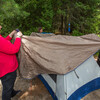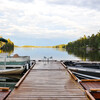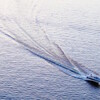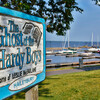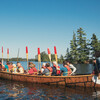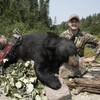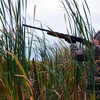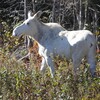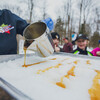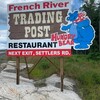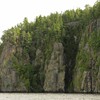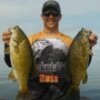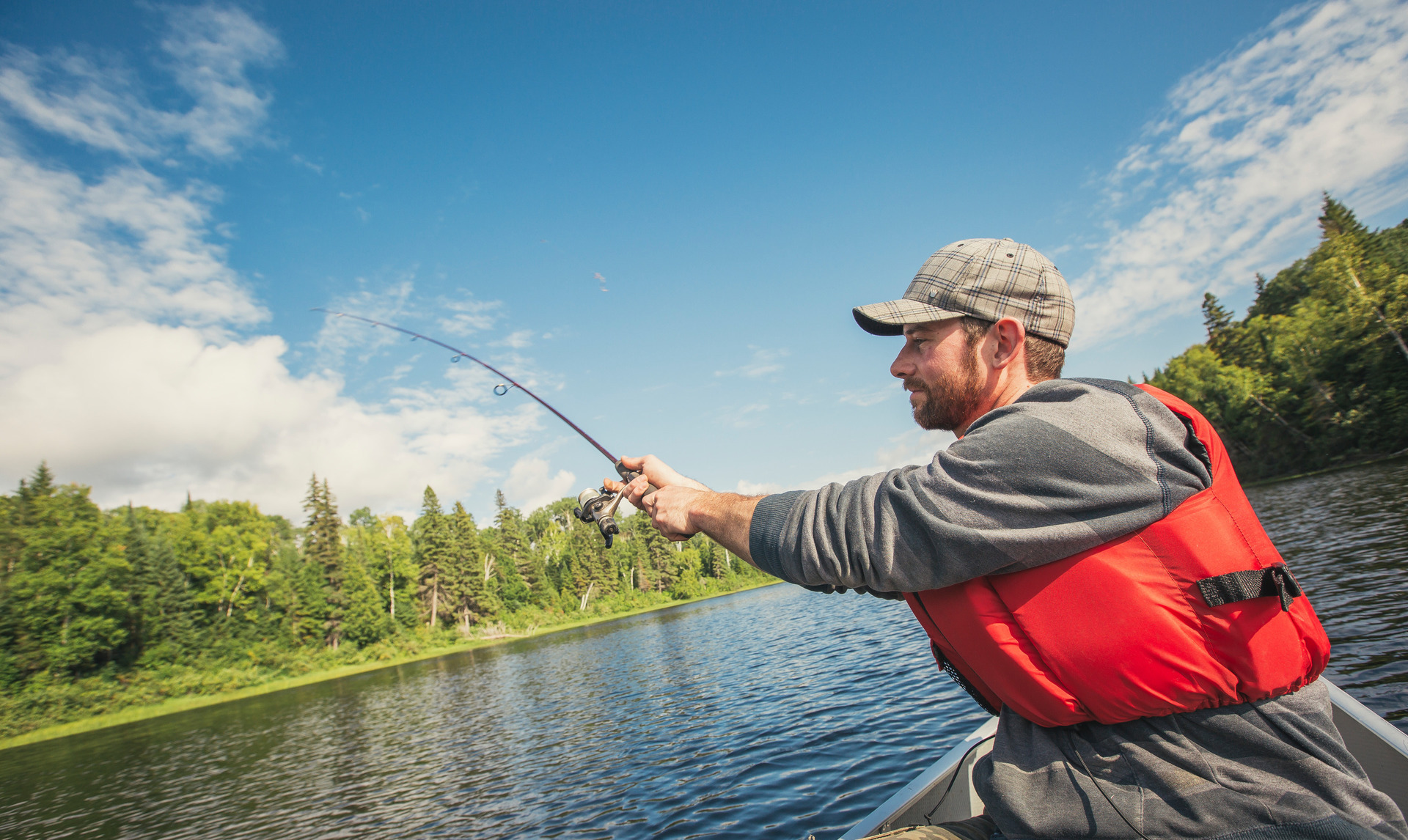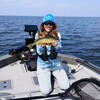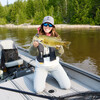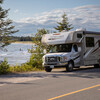Pond Fishing: Targeting Brook Trout
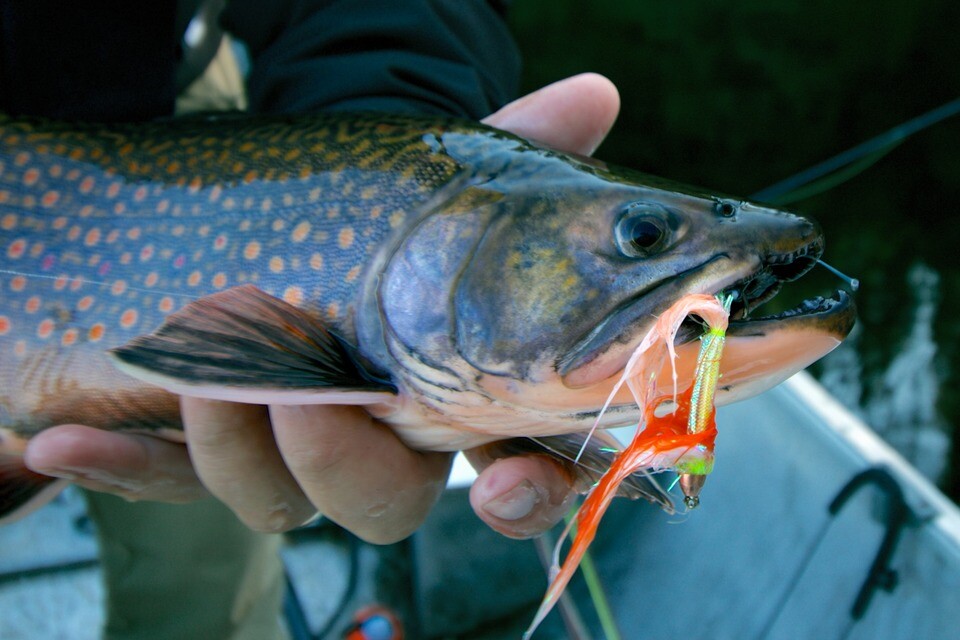
Pond fishing is and will always be a part of each and every angler’s life, no matter what phase they are in. There is something so appealing about heading to a smaller body of water and spending a day picking each and every piece of shoreline apart all with the anticipation of a bite.
Northeastern Ontario is very lucky to host thousands of lakes, many of which are rich in brook trout populations. The areas surrounding Temagami, Temiskaming Shores, the Highway 63 corridor, and Highway 144 around the Watershed (Highway 560) offer ample opportunities for putting brook trout on the end of your line.
Targeting Brook Trout
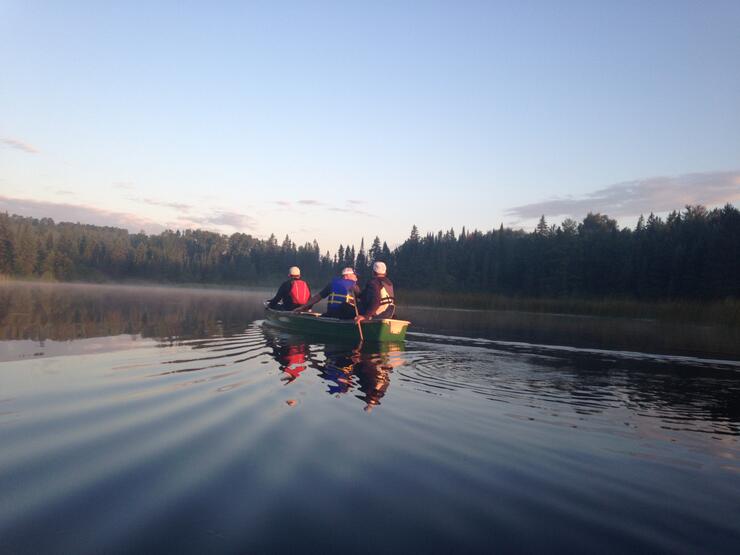
Trout like cold water, and some areas I would target include the thermocline (the area where the cold and warm water meet), freshwater cold springs, and inlets or areas with high runoff, which produces current and feeding opportunities.
An excellent way to target deeper clear water ponds is to locate the thermocline and troll spoons or smaller cowbells, tipped with a minnow to cover water and call the fish up to your presentation. Testing out multiple depths on each pass is another excellent way to locate and find your target depth for the day.
Shallower ponds with river inlets and outlets offer an angler a few key areas to target. I suggest starting at the inlet where colder water is being brought into the lake, which will also provide food. Where there’s food, there are bound to be a fish.
Working from there, I recommend following the current down to the outlet and hoping you find a bite along the way. In addition, shallower ponds that yield brook trout populations are commonly fed with a natural spring. This is a pattern that can be a bit more difficult to find, but locating springs and their colder water is a great technique that will yield fish year after year.
The Right Presentation
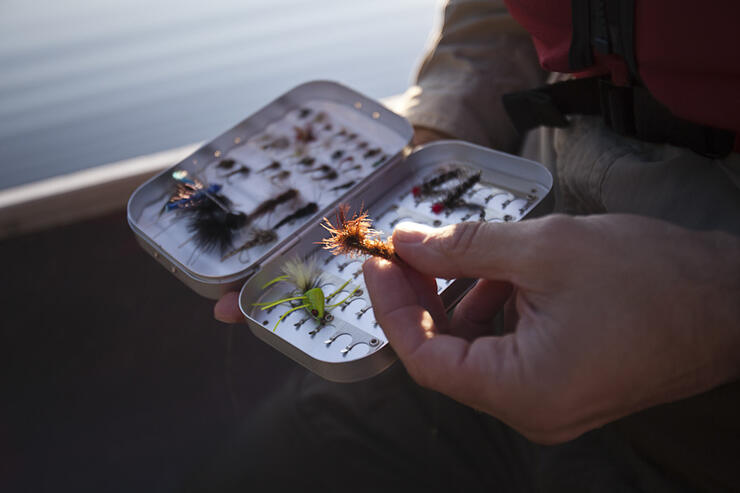
Brook trout are often a finicky fish to target successfully, but some tried, tested, and true techniques include a simple hook and worm/minnow, a variety of spoons (Johnson Shutter and Splinter), inline spinners (Johnson Min-O-Spin, Mepp’s Agilia) in Size 00-2, and a wide assortment of flies.
A two-piece spinning rod is the preferred method due to the ease of transportation and maneuverability, not to mention casting distance with smaller baits. A 6’6” to 7’0” rod (Ugly Stick or Fenwick HMX) with a medium power will do the trick, paired up with a 2500 series spinning reel loaded up with 8- to 12-lb test braid, finished off with 4- to 8-lb Berkley Trilene 100% Fluorocarbon.

Now that your location and body of water are chosen, and your gear is ready, it is time to actually head out on the water to find those fish, activate a bite—hopefully a pattern —then bask in the beauty of one of, if not the most beautifully decorated freshwater species available. Their markings and halos, once hit by the suns rays, will put you in awe while you reflect on the fight that was just had. Given their aggressive nature, brook trout often fight until the bitter end, often bringing acrobatics into the picture
naturally, Resourceful
The Ministry of Natural Resources & Forestry (MNRF) is a great resource that we get to turn to as residents and guests in the Province of Ontario. The fish culture stations and hatcheries keep the inland lakes thriving and filled with fish of all species, sizes, and densities.
As always, make sure to check your Zone Specific Regulations before heading out on any fishing expedition.
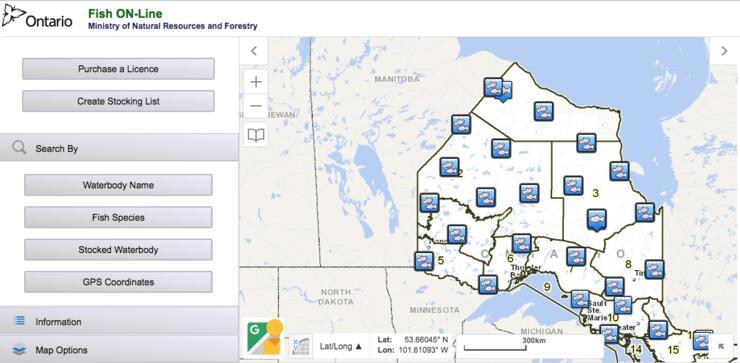
Fish ON-Line is an additional resource offered by the MNRF that releases stocking data, historic records, and species populating each lake. This tool is my number one method for targeting and finding new brook trout waters. Annual stocking reports are often shared, and those lakes with the densest and most frequent stocking information always draw me in. The odds of catching a few fish per outing are generally higher, allowing for a rewarding day out with Mother Nature.
----------------
Ok... I can’t keep picturing it—I'm packing up and hitting the back lakes this weekend! I hope to cross paths with at least one of you and share stories and photos of a great day on the water.
Recommended Articles
The Seven's Best Hikes, Biking Trails and Lakes

7 Best Spots to Check Out in The Seven

Budget Bliss: Explore Northeastern Ontario Without Breaking the Bank

Bring Your Fam!

Time to Unwind: 6 Spa Havens to Discover In The Seven
5 Amazing Places to SUP in Northeastern Ontario

5 Amazing Bike Rides to Discover

Northern Lights in Northeastern Ontario

Northeastern Ontario's Best Pride Festivals

Fish for one of the World's Rarest Species of Trout

An Insider's Guide to Manitoulin Island

6 Small-Town Gems to Explore in Northeastern Ontario

11 Best Things to Do in Kapuskasing, Ontario


